|
So usually, when asked if you have plans for "Flag Day," a check of the calendar should center on the date of June 14th. However, at this particular time of year, there may be a little confusion as we have this date, and two others on which "the Star-Spangled Banner" plays a prominent role. Of course, I'm talking about Memorial Day and the 4th of July. In past years, I've written extensively about all three of these "flag days" and their perpetual meaning and importance to not only our cemetery, but burying grounds throughout the United States of America. Flag Day is a celebration of the old Red, White and Blue itself, and commemorates the adoption of our standard as the official flag of the country. It's also a great day for us here at Mount Olivet Cemetery since we have the gravesite of Francis Scott Key. You know him, right? He's the guy who wrote the nifty, little ode to the "Stars and Stripes" back in 1814 during the Battle of Baltimore at Fort McHenry—a pivotal part of the confusing War of 1812 and our unwanted rematch against Great Britain to keep our independence. Since we are talking Flag Day here, for those interested, our Friends of Mount Olivet (FOMO) membership group invites the public to enjoy our annual Flag Day Author's History Talk. This lecture will once again be held in front of our Key Chapel, behind the Francis Scott Key Monument. The event begins at 6pm (on June 14th) and is free and open to all. We suggest bringing a lawn chair or a blanket to sit on. We have speakers talk on patriotic individuals from our past, with special tie-ins to Mount Olivet. This year, we will feature a lady named Robin Meyer, whose father, Sam Meyer, researched, wrote and published a book on the fore-mentioned Mr. Key. It was published in 1995 under the title: Paradoxes of Fame: The Francis Scott Key Story. Robin plans to talk about the book itself with special recollections of why and how her father researched and wrote this work. The 4th of July has plenty of activities and events to offer throughout Frederick County. Firework displays, concerts, and usually picnics rule the day as we should fondly recall our first War for Independence, and in particular, the date of July 4th, 1776. This was when the Second Continental Congress unanimously adopted the Declaration of Independence, boldly announcing the colonies' separation from Great Britain. A definitive tie-in to Mount Olivet lies in the fact that we are the final resting place of one of the members of that particular Continental Congress. This was Thomas Johnson, Jr., originally hailing from Calvert County but we made him our own with two public schools and a "medical services autobahn" named for him here. Unfortunately, he would have had greater fame if he wasn't absent on July 4th, or whatever the often debated day was that the delegates signed the legendary Declaration of Independence parchment. Mr. Johnson had a legitimate "note from home" (if you will) as he was feverishly raising troops and armaments for the great fight that was looming with the motherland. Thomas Johnson would go on to lead men into battle as a Brigadier General of the Maryland Flying Camp. He would soon be recalled back to his home of Maryland from the battlefields of eastern New York in an effort to serve as the Old Line State's first elected governor. Outside of visiting Johnson's final home (today a museum) Rose Hill Manor, please feel free to pay homage at various places in Mount Olivet on July 4th if you are feeling extra patriotic. Places of interest include Thomas Johnson's gravesite in Area MM/Lot 38, his sculpted bust (which was crafted by local artist Joseph Urner) in our "Star-Spangled Plaza" area near the Key Chapel, or reverently stroll around and through our modern "TJ" burial section to the left (south) of our mausoleum complex and administration/sales office. Don't worry, in each instance, the US flag will be flying nearby. Before we arrive at Flag Day and "the Fourth," we need to remember that we have a day that means more than the fight for independence and a celebration of a colorful swath of cloth. This is Memorial Day. Differing from the other "flag days" with set dates, Memorial Day is observed on the last Monday of May, and incorporates the preceding weekend as part of a three-day commemoration. Memorial Day originated in 1868 and was first known as Decoration Day. The observance took form when the Grand Army of the Republic (GAR) established it as a time for the nation to decorate the graves of the Union war dead with flowers. Confederate veteran groups would follow suit with their own day honoring former soldiers lost in the conflict. The National Archives website provides the following explanation for the origin of Memorial Day: By the 20th century, one day was chosen to solemnly commemorate all Americans who lost their lives in military service—Memorial Day. Over the years, people have made regular pilgrimages to visit cemeteries and memorials on this federal holiday, particularly to honor those who have died in military service. In many cases, volunteers place American flags on graves of veterans within cemeteries of varying sizes, big and small. Public ceremonies of remembrance are generally held by veterans service organizations and municipalities. As historian and preservation manager of Mount Olivet, I'm proud to say that this description fits our approach to a "T." Last Saturday, May 20th, volunteers descended on Mount Olivet to assist us along with our faithful partners in Francis Scott Key Post #11 of the American Legion. Our mission once again was to place well over 4,000 flaglets on veteran graves. It's a huge task, but we are blessed to have so many volunteers come out to help, including people of all ages, vets themselves, and players of Post 11's American Legion baseball teams too! 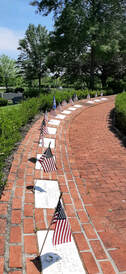 For decades, Legion Post #11 has held a program in the shadow of their namesake’s memorial by the front of the cemetery. This takes place at 12 noon. Earlier in the morning, and in the rear of the cemetery, local Frederick County chapters of the Daughters of the American Revolution conduct organized ceremonies to honor veterans “at rest” in Mount Olivet’s mausoleum complex. This is a more recent tradition with a start time of 10am and includes help from the Sons of the American Revolution Lawrence Everhart Chapter, along with Sons of Union Veterans of the Civil War. Flags are flown at half-mast, Taps is played and wreaths adorn the Francis Scott Key monument and Mount Olivet's World War II Memorial where flaglets gently wave over the mortal remains of 30 individuals lost during that world conflict. This year, a new war memorial stands in Mount Olivet on this sacred day of remembrance (as it was under construction last year at this time). This is our Mount Olivet World War I Memorial Gazebo and Never Forget Garden located in the center of Areas T, U and S and the cemetery's midsection. This picturesque site honors over 600 men and women of World War I buried in Mount Olivet. We are still seeking contributions in an effort to add interpretive panels to tell more of World War I's story, making special note of the 13 wartime veteran deaths (in 1918) associated with interments here in the cemetery from this conflict. Some of these men were killed on the France-Germany front, and others died as a result of the Spanish Flu Pandemic. We dedicated this special memorial last October, and, immediately following the program, asked participants to help us spread poppy seeds in the flower beds surrounding the gazebo. These were designed to form the Never Forget Garden, a tribute to the casualties of war, and especially those soldiers and sailors who remain unknown and missing in action to this day. The red poppy is regarded as a symbol of war casualties, and this tradition started with a poem. This is fitting since poems and patriotism seem to go hand in hand from Henry Wadsworth Longfellow's "Paul Revere's Ride" to John Greenleaf Whittier's "Barbara Fritchie," with the latter's central character buried just yards away from the World War I Memorial Gazebo. In the spring of 1915, a Canadian artillery unit brigade surgeon, Lieutenant Colonel John McCrae, saw bright-red poppies blooming on the war-torn fields where so many soldiers had lost their lives. The sight moved him to write the famous poem “In Flanders Fields." Now here we are seven months later, and our seeds have come into full bloom. Make sure to visit the World War I Gazebo and Never Forget Garden this weekend , or upon your next visit to Mount Olivet. The US flag has definitely been on my mind all week, and last week as well. I gave a lecture for the Sons of the American Revolution Chapter last week on the topic of Revolutionary War Soldiers buried at Mount Olivet. The count numbers 47 at last check. Two days after my program, I found myself placing flags in Mount Olivet's Area E on the graves of some of the very men I had spoken about. These included some heavy hitters including Col. John McPherson, Lt. John Lynn, Brig. Comm. Baker Johnson, Gen. Joseph Swearingen and Maj. Peter Mantz. I wrote a "Story in Stone" on Peter Mantz a few years back, and plan to cover the rest of these gentleman, and nearly 40 more, in coming years as we commemorate the 250th anniversary of the American Revolution over the next decade. No shortage of flags can be seen in this section of the cemetery, and a heavily concentrated area is that of the fore-mentioned Maj. Mantz whose burial lot includes other veterans including three sons (Isaac, Ezra and Charles) who participated in the War of 1812. An adjoining lot contains the grave of a fellow RevWar vet named John Gomber. Gomber was Peter Mantz' brother-in-law. I was curious about the "Gomber" name, so I ventured out to his grave the other day to take a closer look. As I came upon it, I stopped for a moment to take in an interesting viewscape looking toward the southwest. I zeroed in on five flaglets in my immediate line of vision, each belonging to a separate veteran. Here I was reminded of the richness of our historic, burying ground because four different conflicts and time periods of American history were represented by these five vets. For starters, John Gomber, Jr. (#1 in photo above) has a substantial marker dating back to his death in 1831, 23 years prior to our first burial in Mount Olivet. He was originally laid to rest in Mantz Family burying ground that once occupied the northeast corner of West 4th Street and Klineharts Alley in Downtown Frederick. Shortly after the opening of Mount Olivet, his descendants had his body, and that of wife Esther (Mantz) Gomber who predeceased him in 1830, reburied in Area E/Lot 136. Our records state that John Gomber, Jr. was born on December 4th, 1756 in Frederick. He married Esther Mantz (b. 1765) in December 1779 just after celebrating his 23rd birthday. The couple would go on to have 6 children. The only reference to an occupation for John Gomber comes with a brief mention in Jacob Engelbrecht's diary that he was a "brewer." As far as military duty, he was as an Associator for Frederick's Committee Observation in the years ramping up to the American Revolution. He would serve as a private under his brother-in-law, Captain Peter Mantz. Gomber was a member of the legendary Maryland Militia better known as "the Flying Camp." I assume he saw action during the battles in the northeast, specifically, the Battle of Long Island. To the right of John and Esther Gomber's gravestone, one will find a monument containing the name of daughter Ann Christena Smith (1799-1839). This woman's husband, John Dinsmore Smith, has a footstone-style marker to the right of hers and represents the second veteran attached to my "five flag vision" referenced earlier. Thanks to the information found on the 1812 plaque marker placed in 2014, we learn that John Dinsmore Smith was first corporal in the 1st Regiment of Maryland Militia under Capt. John Brengle from August 25th to September 10th, 1814. This means he fought at the legendary Battle of Baltimore that inspired Francis Scott Key to write his "Star-Spangled Banner" song, although it originally carried the title of "The Defence of Fort McHenry." Specifically, Smith was a participant of the Battle of North Point. You can learn more about the colorful Capt. Brengle and his men in an earlier "Story in Stone" article from August, 2019 entitled "A Patriot in the Pulpit." I've been hard-pressed to find much more on this gentleman outside of being John Gomber, Jr's. son-in-law. Frederick diarist Jacob Engelbrecht made note of his death with a journal entry dated March 16th, 1832. "Died last night in the 45th year of his age, Mr. John Dinsmore Smith (commonly called "Yankee Smith") of our town a native of New Hampshire. Buried on the German Reformed graveyard. Son in law of the late John Gomber." Aside from the couple (Ann Christena Gomber and J. D. Smith) marrying in 1822, I was interested to learn that Ann Christena was buried in the Mantz lot with her parents instead of by her husband's side in the German Reformed burying ground (destined to become Frederick's Memorial Park on the corner of North Bentz and West Second streets). This leads to a hazy, gray area in authenticating Lt. Smith's burial here in Mount Olivet. There is no official record of him being interred in Mount Olivet, while his wife and other family members were brought here from the Mantz burying ground in August of 1855. Meanwhile, J. D. Smith's name is not among those still buried in Memorial Park. It's one of those genealogical research nightmares of "Where did his body go?" Or, simply, did we (the cemetery) fail to record his placement here back in the 19th century? We may never know, but for now John Dinsmore Smith is memorialized with a special marker next to his wife and Gomber in-laws. Up the hill on Lot 102, is one of Smith's fellow War of 1812 compatriots by the name of Henry Hanshew. I wrote about this early family of German immigrants last fall in respect to Henry's later relative John K. Hanshew, an expert in the game of Chess. Henry's father, Frederick Hanshew (1760-1832) came to the town that shares his name in the early 1780s. Henry was born in 1785, a year after his parents were married here. His War of 1812 marker, in front of Henry's vintage tombstone, states that Private Henry Hanshew served in the 1st Regiment, Maryland Militia, under Captain Henry Steiner from August 25th to September 27th, 1814. Henry lived to see the beginning of the American Civil War, but not the final outcome, dying in March, 1862. Speaking of the American Civil War, the fourth flag can be found on Area E's Lot 98 and a veteran of that particular conflict. Sergeant John M. Pimm survived the war, but would die shortly thereafter from the result of a fatal "on the job" injury. The son of John M. and Nancy Pimm of Frederick was born on December 3rd, 1835, He would gain employment with the railroad, but also answered the call to defend the Union in the American Civil War. As his stone reveals, John would attain the rank of sergeant and proudly served with the Potomac Home Brigade, an outfit specifically charged with guarding the B&O Railroad and C&O Canal from Rebel marauders intent on disrupting these important transportation lines. Records show that Pimm enlisted as a private into military service in August, 1861. He is also listed as a member of Maryland's 13th Regiment, Company D. .The local newspapers reported John's untimely death at the age of 30. He would die on December 11th, 1865, the day after a terrible accident encountered while working for the Western Maryland Railroad. While searching articles for Sgt. Pimm, I saw his name listed in 1869 among a group of 29 local, Frederick Union Army soldiers buried in Mount Olivet. In late May of that year, Fredericktonians commemorated their dead soldiers by placing flowers upon graves of soldiers for a second Decoration Day. We discussed this day earlier as the impetus for today's Memorial Day. Here are a few excerpts from the lengthy article that ran in the Frederick Examiner newspaper at the time explaining the exercises of the day. A poem appears toward the base of Sgt. Pimm's stone. It reads: "In the bloom of youth thou wast called away to a mansion fair in a world of love On earth no longer thou couldst stay Farewell dear son, we'll meet above" Our last individual (of the five) actually caught my attention while I was placing flags last Saturday. This was a female veteran by the name of Margaret Katharine Sahm. Her stone was halfway obscured by a shrub in need of pruning. It is a plain and ordinary marker, and offers no clue whatsoever of this individual being a veteran. I noted that her birthdate was July 28th, 1898, and her date of death would occur 97 years later on December 9th, 1995. Margaret's grave is within a family plot (Area E/Lot 100) purchased by her grandparents Peter and Mary Sahm. Margaret's parents are here as well: Robert Ashby Sahm (1867-1946) ) and Eva (Smith) Sahm (1874-1958). I had hoped our cemetery records would provide more information about Margaret Katharine Sahm, especially her veteran connection. I came up with nothing, save for the fact that she never married and preferred going by her middle name. I went searching for an obituary next. I found nothing in the Frederick papers, however, an Annapolis newspaper featured a small obituary. This made sense as I found that she had lived in a retirement facility for the last 30 years of her life and had no ties to Frederick from what I could see. The scant obituary did provide me with her profession as I performed multiple online searches and finally had a bit of luck with Ancestry.com finding her in census records ranging from 1900 to 1950. A few other records pertaining to trips abroad came up, but nothing related to military service. My initial hunch was that Katharine Sahm was likely a nurse in World War II. Seeing the obituary and learning that she worked for the State of Maryland Accident Fund from roughly 1917-1960, I was able to rule out the typical medical profession of nurse. I started thinking that perhaps she was a Yeoman (F) in the US Navy during World War I. This is the case with four other women veterans in Mount Olivet. I studied the 1920 census for clues and this got me thinking in another direction. Katharine can be found living on Baltimore's Calvert Street with her family. Interestingly, her profession is noted as that of "Stenographer" followed by the word "Private." Ironically, a cousin living with them is listed as a nurse working in a hospital. I desired additional understanding of the job duties of stenographers, but more so, what were the "private" applications in which a stenographer would be needed or protected? Naturally government work comes to mind, but clandestine services would be especially needed by the military during wartime. The fact that women were considered for recruitment in these roles reflects the level of importance the military placed on hiring qualified stenographers. After joining the ranks, one could be assigned to a variety of different tasks. While some of these were typical of the stenographer role (such as transcribing the dictation of letters, memoranda, reports and other material), other duties were more secretarial in nature. For example, stenographers might also answer the telephone, operate as the office receptionist, check payroll, perform simple accounting, or make inventory of supplies. Since the mystery is in the fact that Margaret Katharine Sahm is regarded as a veteran, I needed to find an assignment to a branch of the military for this woman. I began researching the role of female stenographers during World War I and it led me to the Marine Corps. I found an article on the Library of Congress' website that talked about the first women in this branch. They would be referred to as "Marinettes." When the Marine Corps first opened their branch to women in 1918, advertisements called for “only women of excellent character and neat appearance, with business and office experience.” A woman named Opha May Johnson believed she met these requirements, and on August 12th, 1918, she joined the Marines as the first Woman Marine, or Marinette. In total, 305 Marinettes enlisted during World War I. Their main job was to take over clerical duties so male Marines were free to serve in combat. Women were stationed in Washington, DC, as well as more distantly in Oregon and California. This assignment was only temporary, however. The group was disbanded in 1919, with the last members officially released from service in 1922. The Marines decided women did not belong in the Corps. The mystery of Katharine Sahm's service is certainly not solved. I would ask that you cut me some slack since it is a holiday weekend and all. Regardless, more research needs to be conducted, and/or hopefully a family member may be able to fill us in on "the rest of the story." As can be seen, we take our "flag days" seriously here at Mount Olivet. Thanks again to all who help us with this important task of flag planting as we decorate thousands of graves each summer, and again in fall with Veterans Day. History Shark Productions Presents: Chris Haugh's "Frederick History 101" Are you interested in Frederick history?
Check out this author's latest, in-person, course offering: Chris Haugh's "Frederick History 101," with the inaugural session scheduled as a 4-part/week course on Monday evenings in June, 2023 (June 5, 12, 19, 26). These will take place from 6-8:30pm at Mount Olivet Cemetery's Key Chapel. Cost is $79 (includes 4 classes). For more info and course registration, click the button below! (More sessions to come)
1 Comment
AUTHOR'S NOTE: The following "Story in Stone" was researched and written by Hood College senior Jake Frensilli as part of his internship with us here at Mount Olivet Cemetery (spring semester 2023) As some of the more astronomically inclined readers of this publication might know, SpaceX recently launched the largest rocket by weight in history. Furthermore, the progress of NASA’s Artemis mission should excite all Americans who care about our nation’s future in space. With all these recent advancements in space exploration, we should remember the debt we owe to the early pioneers in the field of cosmology. Without these intrepid explorers, our species would still be grounded here on Earth, and the beauty and immensity of space would still be hidden from us. One of these pioneering astronomers was Dr. Ching-Sung Yu, a Chinese-American cosmologist who worked at astronomical institutions all over North America before settling in Frederick County with his family. Dr. Yu was more than an astronomer; he was a modern-day Marco Polo. His profession many times took him across the Pacific, journeying between China and North America. During the early twentieth century, China was not yet the rising superpower it is today. Instead, by the turn of the century, China was still undergoing its “century of humiliation” at the hands of the Western powers. The nation that would eventually become the People’s Republic of China was then fractured into over a dozen warlord states, with a weak federal government headed by the Kuomintang party from the city of Nanking (Nanjing). It was during this tumultuous period of Chinese history that Ching-Sung Yu was born. Dr. Yu came into this world on April 4, 1897, in the Western-dominated port city of Xiamen, then romanticized as Amoy. Living during these times was tough, and life expectancy was extremely short. By the 1920s, China was engaged in a protracted conflict with the communists, warlords, and colonial powers, chief among them the rising sun of the Japanese Empire. Despite the odds, the young Ching-Sung Yu survived, traveled to the United States in 1918, and earned his degree in civil engineering from Lehigh University in 1921. After earning his undergraduate degree, he chose to study astronomy, earning his master’s degree in that field from the University of Pittsburgh and a doctorate from the University of California. Despite the dangers, Dr. Yu returned to his home country in 1927 after acquiring an education in America. Dr. Yu was determined to revive China’s past astronomical glory. China had been one of the original great innovators of astronomical study; from the time of the first emperor during the third century B.C.E (before common era) until the Ming dynasty, China was the world’s foremost visionary nation in science and astronomy. The early accomplishments of Chinese astronomers were tremendous; these intrepid astronomical visionaries advanced humanity’s knowledge enormously. However, by the time of the “century of humiliation,” China’s preeminent place in science had been lost. Beginning with the Ming Dynasty, China initiated a policy of intellectual suppression and national isolation. The subsequent Qing Dynasty continued these repressive policies, and they ultimately doomed China, one the most powerful nations in the world, to a period of decline and domination by outsiders. Upon traveling back to China, Dr. Yu was one of the leading astronomical scholars in the country; he was one of the few astronomers in China with a prestigious Western education. Subsequently, the Kuomintang government awarded Dr. Yu with the position of Head of the Chinese National Observatory. Dr. Yu also became a Professor at the University of Xiamen and an important figure in the Nationalist government’s educational department. In the early 1930s, as Head of the National Observatory, Dr. Yu designed and oversaw the construction of the Purple Mountain Observatory, located adjacent to the city of Nanjing. This observatory was to have the most powerful telescope in the Far East outside of the Japanese Empire. The observatory was to be one of Dr. Yu’s proudest achievements; hundreds of astronomical bodies were discovered from the observatory while it was in operation. During this time, Dr. Yu built a life for his family in the then-capital city of Nanjing. Ever the industrious visionary, Dr. Yu designed his own home, incorporating elements significant to him and his love of American culture. Unfortunately, Dr. Yu’s success and good fortune would not last, and the long-standing conflict between the Chinese factions and the Japanese Empire finally erupted into open warfare in 1937, forcing Dr. Yu and his staff at the Purple Mountain Observatory to flee. However, Dr. Yu and his team were determined to prevent the observatory’s expensive telescope from falling into the hands of the Japanese, so they dismantled and hid the prize. Somewhere along the way, Dr. Yu married the woman with whom he spent most of his adult life, Lou-Zse Hou. Lou-Zse would follow her husband on his adventures across the world until her death in 1971, seven years before the death of Dr. Yu himself. Dr. Yu and Lou-Zse had two children while living in China, a son and a daughter named Leslie. Unfortunately, the Yu's son perished due to illness outside Nanjing while the family was fleeing the Japanese Empire’s encroaching forces. Dr. Ching-Sung Yu and his family escaped China and went to Canada for safety. Sadly, Dr. Yu seems to have been largely erased from the official history of the Purple Mountain Observatory and from the history of Chinese astronomy; his name is not listed anywhere on the PMO’s official website. Following the Yus' exit from their homeland, China’s civil war raged on until the communists eventually secured complete victory, causing the Kuomintang forces of Generalissimo Chang Kai-Shek to retreat to the island of Taiwan, where they remain to this day. However, Dr. Yu’s beloved Purple Mountain Observatory was located on the mainland, now fully controlled by communist forces. Less than a decade after their decisive victory in the Chinese Civil War, the People’s Republic of China underwent a chaotic period known as the “cultural revolution.” During this time, memories of the individuals who had served the Kuomintang government, as Dr. Yu had, were expunged from the records and erased, the individuals being declared “counter-revolutionaries.” This is likely the reason for Yu’s exclusion from the official history of the Purple Mountain Observatory. After Dr. Yu left China, his Purple Mountain Observatory was re-opened by the communists; astronomer Zhang Yuzhe would now run the institution. Eventually, due to the rapid urbanization in Nanjing during the late twentieth century, Purple Mountain Observatory would have to be closed; the light pollution from the mega-city prevented the telescope from working properly. Although Ching-Sung Yu would never again be the director of the Purple Mountain Observatory, his distinguished astronomical career was not yet over. Dr. Yu worked at observatories and astronomical departments all over North America before settling in Frederick, Maryland. More on that later as his journey from China would have a few stops in between. Dr. Yu and Lou-Zse wound up in Toronto where our subject gained employment at the University of Toronto and the David Dunlop Observatory there. After a few years, he would return to the United States, scene of his former collegiate studies.  Original High Altitude Observatory Original High Altitude Observatory Dr. Ching-Sung Yu moved to Boulder, Colorado in 1948 to work as an astronomer for Harvard and the University of Colorado . He practiced his craft at the High Altitude Observatory (later affiliated with National Center for Atmospheric Research (NCAR)). The NCAR's website provides this brief history of their work in Colorado with significant ties to Harvard University: "In 1940, Harvard graduate student Walter Orr Roberts and his doctoral adviser, astrophysicist Donald Menzel, founded a small solar observing station high on the Continental Divide in Climax, Colorado. Roberts' assignment at the observatory was to last only one year, but, with the country's sudden entry into the war (World War II), he remained at Climax as sole observer, making daily observations of the solar chromosphere and corona. These coronal observations from Climax, with their implications for potential disturbance of terrestrial radio communications, became essential to the war effort. From these small beginnings, the station evolved into the High Altitude Observatory and grew substantially after the war. In the late forties, HAO's laboratory and administrative facilities were transferred to the University of Colorado and the gentler climate of Boulder. In 1960, HAO formally became a division of a newly-established research institute in Boulder, the National Center for Atmospheric Research." Dr. Yu would study the cosmos with help from the Sommers-Bausch Observatory, today connected with the University of Colorado. The building was dedicated on August 27, 1953, during the 89th meeting of the American Astronomical Society, of which Dr. Yu was a member. The 17 foot, 10-inch Bausch refractor, originally from the Bausch & Lomb building in Rochester, New York, was installed in the dome the same year. Harvard University’s High Altitude Observatory also had office space inside the Observatory. Dr. Yu would be published in association with his High Altitude Observatory colleague Donald Menzel, as he helped co-author and provided illustrations.  While in Colorado, the Yus would be blessed with another child in addition to daughter Leslie. Samuel Yautung Yu was born in 1951, and his name should be very familiar to many in Frederick today. "Sam" Yu, as he was more commonly known, lived the majority of his life here in Frederick, graduating from Gov. Thomas Johnson High School in 1969. After attending Rochester University, he came back home to Frederick and eventually gained employment as a photographer with the Frederick News-Post, beginning in the early 1980s. He would become a well-known fixture of the community over his 38 years with the paper, holding the titles of Chief Photographer and Head of the Photography Department. Much of Dr. Ching-Sung Yu's work focused on heliology: the study of the Sun. Dr. Yu was chiefly interested in the study of the sunspots, which appear on the surface of the Sun as thousands of small (relatively speaking; some are larger than the entire Earth), highly dynamic, brownish dots. Dr. Yu also invented a new method of making photographic images of spectrographic slits. This is a considerable contribution to not only heliology but also to cosmology in general. Observing the spectroscopy of astronomical objects, such as the Sun, is how cosmologists determine what objects are made of; thus, any advancement in the field of spectroscopy is a monumental achievement.  In 1995, Dr. Yu left Colorado to come with his family to central Maryland in order to accept the directorship of the Williams Observatory at Hood College. Longtime readers might recognize the benevolent family for the Williams Observatory from a previous “Stories in Stone” article titled “Possessors of ‘Charity.’” In 1922, the Williams family bequeathed Hood College $30,000 for the construction of an “astronomical building;” thus, the Hood observatory was named in the family’s honor. This would be constructed in 1924. Dr. Yu would be taking the place of an old friend in the process. This was Miss Leah Brown Allen who had held charge of Hood's observatory since 1927. Having directed a much larger observatory, which he, himself, had designed, Dr. Yu was highly qualified for this position. As the Frederick News-Post article points out, Dr. Yu had also been friends with former director, Miss Leah B. Allen. Allen had personally sought out Dr. Yu for the position once she decided it was time to retire. Dr. Yu would spend the next two decades of his life, and the last portion of his professional career, as the director of the Williams Observatory. The Williams Observatory here in Frederick is not as powerful as the Purple Mountain Observatory but Dr. Yu still participated in new discoveries and strived to push the envelope of space science. We now know for certain, using advanced modern instruments and also having had the benefit of on-planet probes, that Mars does not have life on its surface. Regardless, Dr. Yu’s commitment to remaining on the front line of cosmology, even as he approached his retirement, is demonstrative of an insatiable scholar. By all accounts, Dr. Yu valued his time as the observatory’s director and enjoyed working with the students at Hood College, then an all-female student body. He also taught mathematics and geology while here. The Yus resided at 1201 Fairview Avenue in Frederick, which made for an easy walking commute to Hood and the observatory for Dr. Yu. In addition to raising his children into adulthood, h e was also an avid stamp collector, and boasted many from his two homes of China and the United States. Lou-Zse died on April 9, 1971. Dr. Yu would retire that same year, having had a remarkable and highly successful career that took him across the United States and the world. During his time in Frederick, Dr. Yu was an active member of the community and enjoyed informing people about developments in Astronomy and Cosmology. Dr. Yu never returned to China, and despite his enormous success in America, one has to wonder if he ever felt homesick for the nation of his birth? Ching-Sung Yu died on October 30, 1978, in Frederick, Maryland, and is buried at Mt. Olivet Cemetery alongside his wife, Lou-Zse in Area KK/Lot 125. In recognition of Dr. Yu’s academic achievements, the Royal Astronomical Society of Canada named an asteroid after the accomplished scholar in 1987 nearly a decade after his death. In 1985, Dr. Yu's son Sam made plans to see his parents' homeland. He would travel to China at the behest of the Chinese government, which, interestingly enough, was honoring his father’s work at this time. This trip was significant for Sam, who discovered his father’s house that he, himself, had designed. Sam spent more than a month in China, being “wined and dined” by important figures from both the Purple Mountain Observatory and the Academia Sinica. Sam returned and told the story of his landmark adventure in the Frederick News-Post through a wonderful photo-essay. Like his father, Sam would go on to have a tremendous professional career looking through a lens. Sadly, Sam Yu passed away at the age of 71 on Wednesday, September 21, 2022.  Frederick News-Post (February 19, 1985) Frederick News-Post (February 19, 1985) Special thanks to Mary Atwell, Archivist at the Hood College Archives, Leslie Yu (Dr. Yu's daughter) and Sherry Johnson (wife of Sam Yu) for their assistance with this article.
Along with photos, census records, obituaries and other newspaper articles, one of the things I like to add to each of these “Stories in Stone” blogs is a visual of where the decedent once lived. It’s not simply a “compare and contrast” between mortal residence versus eternal (cemetery) home, but surely helps bring the subject’s story alive—pardon my word choice, of course. The “a-ha” moment that many of our readers experience by seeing a familiar and existing structure still standing (long after a decedent) is truly something that makes these subjects from Frederick’s past more tangible and real, proving they too were residents just like you and me. Here is where they spent a part of their mortal life, be it a childhood home, adult residence or workplace. This is where they grew up, played in the yard, celebrated birthdays and holidays, raised children, or at the very least, spent time sleeping. On a personal level, it’s usually a treat to learn about past owners of one’s home, especially if it is an interesting, historic house. However, I do experience complaints on occasion when linking a deceased individual to a specific domicile. As regular readers know, all my stories end the same—the subject dies. Sometimes this occurs after a glorious life filled with achievement and accomplishments. Other times, decedents pass after an illness of some duration. And then, there are always those unfortunate demises caused by a terrible accident or, worse yet, a homicide. Yes, learning for the first time that an event of this nature happened in the confines of your cherished, present home can be a little unsettling, usually compounded by the graphic manner in which newspapers of the past reported on such events. They often painted grisly pictures of the scenes of crime, leaving few details to the imagination. With today’s “Story in Stone,” there is nothing to fear as I have found no outlandish or disturbing “ends” for family members, however quite a few peacefully left us here. The focal point, however, is that I want to introduce you to a historic dwelling in downtown Frederick that played home to multiple generations of a family who have made "good-old" Mount Olivet their eternal home. The address of this dwelling is 133-135 West Church Street, and the family’s name—Salter. From a timeliness perspective, this house was recently awarded a historical plaque from the Frederick County Landmarks Foundation (FCLF). These black, oval-shaped plaques of cast-iron promote the preservation and restoration of our county’s heritage. They go to property owners of buildings and structures that are over 100 years of age, possess historical and/or architectural significance, and retain physical integrity. During the past four decades, FCLF has awarded more than 400 plaques recognizing and encouraging good stewardship. The beloved Schifferstadt Architectural Museum was designated a National Historic Landmark by the United States Secretary of the Interior in 2017. Long before that honor was bestowed, Schifferstadt was the first building to be recognized by the local Frederick County Landmarks program and is registered as plaque #001. It’s always worth a refresher course to pay homage to the oldest home in the town center of Frederick as the city continues to grow outward, and is officially marketed as "Frederick County's oldest house open to the public." Schifferstadt has links to hundreds of descendants buried in Mount Olivet and thousands of others around the country. Delegations from Schifferstadt, Germany have been making official visits here for decades as part of the "Frederick Sister Cities Association." This is the site of the long-running, annual Oktoberfest celebration (sponsored by Frederick County Landmarks) as well. It's amazing to think that this structure, deemed today as one of the six most important historical houses in Maryland by the Maryland Historical Trust, was almost demolished in the early 70's to make room for a gas station. God bless those founding mothers of Frederick Landmarks (ie: Birch Hotz, Anne Lebherz, Maggie Kline and Fritsie Kelly) who began the organization in 1972 and also saved the likes of Rose Hill Manor, the Beatty-Cramer House and the Barbara Fritchie "replica house." The following comes from the Frederick County Landmark’s website fredericklandmarks.org: “The story of Schifferstadt began as part of the great German migration in the 1600s and 1700s when tens of thousands of Germans fled their ravaged native land to seek a better life in America. Most landed in Philadelphia and settled in Pennsylvania, but many continued west and south, tracing the Monocacy River valley to Frederick County. Joseph and Catharina Brunner led three generations of their family on this path, reaching Philadelphia in 1729. In 1736 most of the Brunner family moved to what is now Frederick County and began farming a 303-acre tract of land. They called it Schifferstadt, after their hometown in the German region of the Palatinate. Three grown sons and two married daughters settled on nearby parcels. The Brunners first built a log cabin, but after 17 years in the log house, Joseph sold Schifferstadt to his son, Elias, then 30. In 1758 Elias and his wife Albertina built the stone house that has stood for 265 years and today is a prized feature of Frederick’s early days.” Like the Brunners, the Salter family, our focus in this week’s “Story in Stone,” also claim German roots and a similar route to Frederick through Pennsylvania and the port of Philadelphia. I recently learned more about this group from a lady named Marilyn Easton, current owner of the family domicile at 133 West Church. Interestingly this home, and the one next door at 135 were built originally as one family dwelling after Mrs. Nettie Salter bought this property lot in 1896 from Lewis Brunner who operated the iconic town mill across the street since obtaining it from the Bentz family in 1848. Back to Ms. Easton, she attended a recent prospective member day for our Friends of Mount Olivet group and was given a suggestion by Board members at Frederick County Landmarks Foundation to seek me out, specifically because she had mentioned a multitude of family members (past owners of her property) being laid to rest here in Mount Olivet. And “By George,” she would wind up showing me the family plot in Mount Olivet’s Area L, conveniently located behind the Key Memorial Chapel where we held the prospective members meeting referenced. “By George!” Full disclosure here— I don’t think I have ever used the expression “By George” in my life before visiting the Salter gravesite last month, but I have heard it used both in person and on television. Regardless, the saying was the first thing that came to mind after Marilyn Easton showed me the family plot in which four out of the nine family members (in Area L/Lot 142) were named George. Three of the respective Georges’ wives are located here, along with a daughter/sister named Emma Kate Salter. The lone, dissenting male without the name George is Frank Carlin Salter, which may ring a bell for loyal readers as I published a “Story in Stone” back in January (2023) on this man’s namesake (Frank Carlin), a champion hotelier from Frederick’s past. Just where did the saying “By George!” come from? Online sources say that "By (God and Saint) George" is an old English oath that was commonly invoked immediately before charging into battle. This tradition dates from the 12th century up through World War I. A version of the oath can be found in Shakespeare's Henry VI (part I), written circa 1589 and set in 1431. St. George is particularly popular in Great Britain and for good reason due to his supposed dragon-slaying heroics on the flat-topped (and aptly named) Dragon Hill in Uffington, Berkshire in the Middle Ages. He is considered the patron saint of knights, soldiers, scouts, fencers and archers, among others. St. George’s moniker has been invoked against the plague and leprosy, and also in encountering venomous snakes. In England, St. George’s Day is still celebrated, and his flag flown, on his feast day. This happens to be April 23rd and sadly, like me, you likely didn’t take full advantage of commemorating this day either. I also learned that the name George means “earthworker,” or as we know this occupation better, “farmer.” And again, how appropriate as Earth Day on April 22nd, immediately precedes St. George’s Day. I sure hope I ate vegetables and gave thanks to farmers and Mother Earth on at least one of those days. So, By George, let’s get to some of these Salters, shall we?! The perfect person to start with is George Edward Salter. We have his biography from 1910, courtesy of T.J. Williams and Folger McKinsey who gave us the History of Frederick County in 1910: “GEORGE E. SALTER, one of the leading saloon-keepers of Frederick, son of William E. and Mary A. (Killian) Salter, both deceased, was born in Frederick City, September 9, 1845. The late William E. Salter, father of George E. Salter, was born in Germantown (PA). He learned shoemaking, and in early manhood, removed to Frederick, Md., where he spent the rest of his life. He worked at his trade, and also held the position of lamplighter of Frederick while the town was lighted with gas. He was the first janitor of the Independent Hose Company, at the old engine house, a position which he retained until the time of his death. He was highly esteemed among the older citizens of Frederick. William E. Salter was married to Mary E. Killian. Their children are: 1, Elizabeth (Mrs. David H. Kolb), of Frederick, deceased; 2, Catherine, deceased, married to the late Charles B. Shope, of Frederick; 3, Annie (Mrs. James Rigdon), of Frederick, husband, deceased; 4, George E.; 5, Charles, deceased. George E. Salter grew up in Frederick and attended the public schools of that city. He learned cigar making, but after working at that trade for some time, he accepted the position of night clerk in the hotel of Frank Carlin, with whom he remained for a number of years. Mr. Salter then accepted a clerkship in the saloon of H. B. Showman, and when Mr. Showman retired, he purchased the business. Mr. Salter has been very industrious and attended closely to his business and, consequently, has prospered financially. He bought the old Brunner property on the northeast corner of West Church and Bentz streets, where he erected the beautiful home in which he now resides. He afterwards bought the property of George K. Gilbert on Market Street, and made it his business stand. It is one of the finest business stands in Frederick City. Mr. Salter is a stanch Democrat, and is prominent among the business men of the city. He belongs to the Improved Order of Red Men. George E. Salter was married, February 17, 1871, to Nettie T., daughter of the late Dennis and Rebecca (Measel) Stull, whose father was prominent among the older farmers of Frederick County. Their children are: 1, Emma K., at home, unmarried; 2, George W., of Frederick; 3, Frank C, at home; 4, Mamie E. (Mrs. Richard Keyser), of Frederick. Mr. Salter is a Lutheran. His wife belongs to the Reformed Church.” Fixing the Salters A coincidence of timing has our Friends of Mount Olivet gravestone restoration team currently making repairs to the gravestone of George’s father, William Ent Salter (and also that of George's brother, Charles William (1849-1872). They are buried in Area A, and I just visited their gravesites while conducting a tour on May 6th for the Coalition to Preserve Maryland Burial Sites. William’s tombstone has been eyed for repair over the last year by members of the local Independent Hose Company because William Ent Salter served as the company’s first janitor and apparently lived in their original hall in the first block of West Church Street. It was in eight pieces until this past week, and should be back upright again in coming weeks after many years of being propped up against its base-stone as to minimize further damage and allow mowers to do their job.  FOMO's Ray Crough and Superintendent Ron Pearcey explaining our recent repair efforts on the Salter graves to participants of a cemetery conference sponsored by the Coalition to Preserve Maryland Burial Sites. The one-day conference was held in Downtown Frederick on May 6th, 2023 and included preservation volunteering heroes from all over the state who are saving and championing our endangered cemeteries and aged gravestones. As for son George E. Salter, he was well-known in town and engaged in the saloon business for much of his life. The obituary mentions his affiliation with Frank Carlin at whose hotel Salter worked as a night clerk. He would name his son after his mentor. Mr. Salter’s first business endeavor came when he purchased the business located on the north side of East Patrick Street, just a few doors east of Market Street and the Square Corner. Many are familiar with this structure as the second Rosenstock Brothers dry Goods and clothing store location, where many believed the famous Civil War photograph of Confederate soldiers marching was taken (until recently proven incorrect). Today, an entirely new building constructed by the Rosenstocks sits on the old saloon location and currently serves home to Frederick County Bank. Hamilton B. Showman owned the saloon business here before Salter, but not the land/building itself. That was owned by Francis & Columbia Lewis from 1881 to 1898, when they sold it to Aaron & Jacob Rosenstock. Salter was only the tenant. In 1903, Mr. Salter bought a saloon location at what is today 20-22 North Market Street and would conduct a cafe here until the time of his death on November 19th, 1912. Today, this location is home to the Tsunami Restaurant. I found the 1910 US Census entry for this family interesting as multiple family members were employed in the alcohol trade. George E. is listed as a saloon keeper, George W. as a bartender and Frank C. Salter as a clerk for a brewery. George E's wife, Antoinette Francis (Stull), would outlive her husband by nearly three decades, passing in 1940. In case you were curious, both died in their home at the end of West Church Street. George and “Nettie’s” daughter Emma Kate, lived to achieve 76 years of age (1870-1947). Now she died at a location in the 700 block of North Market Street, house number 708 according to our cemetery records. George and Nettie’s oldest son was George William Salter (1872-1933), also a successful businessman in town, having conducted a livery stable on South Market Street. Their son George W. Salter owned what had been Sinn's Pioneer Livery Stables on the west side of South Market between Patrick and All Saints streets at what would today be numbered 47-49. On the 1911 Sanborn Insurance Map this was identified as "Palace Livery" and you reached it by going down what is now called Citizen's Way. Upon reaching his son George W.'s adulthood, George E. Salter decided to subdivide the family home in question. George E. remained in the west side of the property (today’s 135), and George W., and wife, Roberta “Mae” Dutrow (1874-1954), took the east side of the house where my new friend Marilyn resides today at 133 West Church. This is evident in the 1910 Census that I showed earlier. As for George W., this residence (and eventual death place), would serve as his family home for the entirety of his life. He and "Bertie" would be married here as well. George William Salter would eventually become a member of the local Frederick police force after receiving an appointment from Mayor Lloyd C. Culler. He would later take the position of desk sergeant—a position he held until he became incapacitated due to the illness that would take his life. This occurred on March 27th, 1933. George W. and “Bertie’s” son, was named for his grandfather—George E. Salter. He lived from June 6th, 1905 though June 11, 1980. His claim to fame lies in the fact that he was a local radio personality on WFMD. His obituary states that he was a sportscaster and I saw several other articles in the local paper that showed his involvement with, and support of, local youth and school sports teams. George also worked for the Francis Scott Key Hotel, which is fitting because his namesake grandfather also had employment ties to its predecessor in the old City Hotel. He would never marry or have a little George of his own. Two more children of our original George Edward Salter are left to briefly discuss as they are buried within the Salter plot on Area L. First there is the aforementioned Frank Carlin Salter (1874-1917). He was a barber by trade, and lived with his mother. He also was tied to the Independent Hose Company like other family members. Frank got in on the "death and dying at the home residence" business as well and passed at age 43 after battling medical maladies for quite some time. Of course this should really come as no surprise as countless folks expired at home. Frederick didn’t get a hospital until 1901, and these were used to treat emergencies and eventually to perform surgeries more than the maintenance care performed by health centers today. Finally, a granddaughter (of George E. and Antoinette) would make her mark—Antoinette Margaret (Salter) Rothenhoefer (1897-1971) in my story here by bringing yet another George into the family. (She was a daughter of George W. and Bertie Salter). This couple lived at 27 East Third Street instead of the family homestead, however. Antoinette married George Leonard Rothenhoefer who hailed from Yellow Springs north of town. Mr. Rothenhoefer was born on June 16th, 1894. In addition to being a veteran of World War I, he was also a tax consultant with offices on North Court Street. The couple lived at 133 West Church, but later moved to 27 East Third Street. Mr. Rothenhoefer died seven months after his wife on March 10th, 1971. As an aside, George and Antoinette's son, Robert Salter Rothenhoefer (1922-2003), was a World War II veteran and long-term Maryland State’s attorney, repeatedly elected to serve from 1959 until his retirement in 1982. So I think I have successfully covered "the house-full" of residents in the Salter family plot in Area A, most of whom lived (and died) in this converted duplex house on the west end of West Church Street. Just like every stone has a story, so does every house and building in our fair town and county. The fine folks of Frederick Landmarks are inspirational in influencing homeowners to not only being structural stewards, but stewards of the personal history of earlier owners as well. Marilyn Easton is certainly representative of that spirit, and I truly thank her for sharing the life and times of the Salter family with me for this blog entry. Marilyn provided some of the visuals and made sure I was on-hand for the plaque unveiling on May 3rd, 2023 as she welcomed a delegation from the Frederick Landmarks Foundation to tour her home. Among the members on hand were two Friends of Mount Olivet members who serve the Frederick Landmarks to their fullest. These are Walter Olson, Chair of the Plaques Committee, and my friend, Jennie Russell, current Board president of the organization. I appreciate the continued support and cheering on that Landmarks continues to do for our efforts at Mount Olivet in the realm of preserving records, structures and stones. One of the interesting things that Marilyn Easton provided me for my research on this story was a vintage recipe for gingerbread, taken from the pages of the Frederick Post back in 1937. I was perplexed at first, but soon learned that this was a prized recipe from Roberta “Bertie" Salter, wife of George W. Salter. As said before, I was invited to the plaque committee's recent house-call to deliver, and present, Marilyn's cast-iron award. She was a perfect host, and provided interpretation during her house tour about the former tenants. She also showed us all the restoration improvements she has lovingly made in recent years thanks to her talented contractor Chris Bowers. But that all said, the highlight of the day was a trip to Marilyn's kitchen. It proved sweet and filling as we were served homemade gingerbread with real whipped cream. It was Bertie Salter's actual recipe, successfully attempted 86 years later. The grand finale was the awarding of plaque number 442, which was duly hung on the front of 133 West Church. I guess it’s safe to say that the Salter house is now part of an even larger family—the family of Frederick Landmarks “By George!”
Writing a weekly blog is very gratifying. Yes, it takes a great deal of time and research, but also requires the "3 P's"-planning, patience and persistence. I say this more than anything when things seem out of my control as a content creator and publisher. Sometimes there are technical glitches that keep the story from going out. I hope this isn't the case here, as I am writing a micro-story in hopes to get a larger, more intricate story in front of more eyes—your eyes. You can say that the "powers that be" have successfully thwarted multiple attempts to give a boost to this excellent tale about an early Frederick archeologist with ancestral ties to some of the state's oldest families. I have included a link to this story about Edward Ralston Goldsborough, one that I hope you click and read after I tell you a short story about a recent pair of gravestones I found in Area OO of Mount Olivet.  "winged death's head" "winged death's head" The Opening Act Mount Olivet Cemetery is comprised of monuments dating from the 1700s up through the present day. Their diversity of size, color, shape and composition provide a landscape of beauty, culture and historical significance. In the late 1700s and early 1800s, monuments were often made of sandstone and slate. Traditionally, these were easier to quarry, cut and carve. Sometimes they were carved with skull and crossbones and imagery such as a winged death’s head, representing the fear of death and afterlife. During the Victorian era (1837-1901), there was a change of attitude towards dying. The winged death’s head was softened and often shown as a winged cherub. Marble and brownstone monuments were introduced in the early 1800s and often had verses, or even portraits carved on one side. Occasionally monuments were shaped in the form of a table and chairs and families would come to picnic as they visited their loved ones. Typical symbols during the 1800s included angels of death, mourning women, star of David, the Dove, lambs for children, the Egyptian symbol Ankh, Eye of Horus, weeping willow tree, maple leaf, wreaths, flowers, horseshoes, a sword or a broken column.  In 1873, U.S, Secretary of War William W. Belknap adopted the first design for headstones to be erected in National cemeteries for Civil War soldiers who fought with the Union Army. The style was a slab design of marble or durable stone four inches thick, 10 inches wide and a height of 12 inches above ground. Within several years, these stones were being provided to private cemeteries and also extended to include Confederate soldiers so they became a common sight across the country. We certainly have our share of the latter here in Mount Olivet. By the 1900s, it became evident that environmental factors affected the marble stones and blurred the engraved lettering. As an alternative, a very hard stone called granite became the material of choice. Granite is available in a variety of shades and colors and is still one of the most popular monuments used today. It holds up to the elements, clearly shows the engraved lettering and can be polished to a brilliant shine. We don't have a plethora of sandstone monuments here in Mount Olivet due primarily to the age of Frederick. If we had been founded earlier in time, then we may have more sandstone examples like the communities of the northeast part of the country for example. I wrote on our best known specimen some years ago, in the form of the gravestone of Jacob Stoner (Steiner), one of our earliest settlers. The builder of the famed Millpond House of Worman's Mill died in 1748, just three years after Frederick Town's founding. I like to think that this is the oldest formal, grave monument that exists in western Maryland and ask people to provide me other surviving examples that are older, and just as detailed. Steiner descendants had approached the cemetery over a decade ago hoping for its safekeeping indoors, as the elements were slowly destroying this ancient specimen. Such is sandstone. We recently had the Steiner stone monument cleaned and placed in a custom built base for future display as I'd like to open a mini visitor center/museum here one day. I was recently on a walk of the grounds and came upon two nouveau sandstone monuments, a rare sight as they truly stood out in the company of other stones. They belong to a couple with the Irish surname of Power—John and Elizabeth, the latter going by the nickname of "Bessie." I didn't find out a great deal of information on these individuals, because John came to this country in 1900 as an immigrant from Dublin, Ireland. To be exact, his true hometown was that of Rathdown. He lived the rest of his life in Washington, DC. Bessie, was the former Elizabeth Matilda Moore, a native of Frederick who moved to the district with her parents (Isaac Wisong Moore and Emma Virginia Bartgis) in her youth. The couple married in Washington in 1911, and took up residence there as well. Marriage announcements in both Frederick and the district's newspapers gave me my best source of info on this couples "story in sandstone." John was born in Ireland (as earlier mentioned) on March 26th, 1882. His life was not particularly long, as he would die at age 55 on January 10th, 1938 in Washington, DC. His obituary did not provide me with much information as you will see below. John's draft registration gleaned some information on the couple's whereabouts in 1917, along with John's profession. He had a career in the grocery field as his employment was with a store called the Old Dutch Market. John, an Irishman, served as general manager of a grocery store called the Old Dutch Market. This was a chain begun in 1907, and he was originally assigned to the store in northwest on Pennsylvania Avenue. I also took notice that he was a pretty good golfer, as his name appears as part of competitive foursomes on the greens of the surrounding Metro area. Bessie was a homemaker and somewhat a socialite, while her husband continued work with the Dutch Market. I found a couple interior shots (courtesy of the Library of Congress) of one of the Washington locations on the popular website GhostsofDC.org and wonder if any of these employees pictured were Mr. Power? Sadly, I read, by July 1927 they were forced to close the Old Dutch Markets and the whole company sold for $70,000 at auction. The 1930 census lists John as the manager of a chain store, so he wasn't out of work for long, perhaps a sign of his managerial talents. In this same census, the Powers, who would have no children, were living in one of the nicest apartment complexes in the city. In doing a search on this building, I found the following information regarding the Chastleton which was built in 1919 and considered "state of the art" for its time. "The annex will be constructed in the same architectural style and height as the Chastleton so that the structure will be one complete building, with a frontage of 234.5 feet on Sixteenth street and 252 feet on R street. It will extend from the corner of R and Sixteenth streets to within 40 feet of the Scottish Rite Temple. This space is left to furnish light. The complete Chastleton apartment will contain 310 apartments and 1,000 rooms. The transaction was handled through the F. H. Smith Co. In connection with the financing of the Chastleton Apartment Annex, S. W. Straus & Co. have underwritten a first mortgage 6 per cent serial bond issue of $724,000. The total valuation of the property is placed at $3,000,000." John died in 1938 and was buried here in Mount Olivet in his wife's family lot (Area OO Lot 77). He had no ties to Frederick as an Irish immigrant who spent his life as a naturalized US citizen in DC. Here he is under a sandstone monument. However, this rock may just be Irish in origin after all. I found a company online that championed Irish Sandstone as one of the best choices for grave marking as "a hard-wearing stone with beautiful colours making it the perfect choice for a headstone." Bessie Power lived until 1949, and I found it interesting that her obituary mentions that she worked for the Department of Justice. She would be buried here in Mount Olivet between her husband and parents who had passed in 1911 (mother) and 1916 (father). The Powers stones just need a good cleaning, but the sandstone has held up very well over the past 75-85 years, and are truly works of graphic art against a beautifully colered palette of what I assume is Irish Sandstone. Can anyone verify if these stones hail from the Emerald Isle?  Main Event So speaking of stone and culture, let's switch gear to the disciplines of geology and archeology, shall we? The study of geology has provided archaeology with important information to unlock the past. Knowledge of rocks and minerals can be used to identify where materials for stone tools, pottery, and buildings originated, and in some cases, these items can be studied to determine when they were first used by people. These methods allow archeologists to study trade networks between prehistoric peoples over time. The finding and study of spearpoints and arrowheads have been important clues to the past all over, but also here in the Middletown and Monocacy valleys of Frederick County. Time now to introduce Edward Ralston Goldsborough, a man who devoted much study to the subject of Native Americans and the first human travelers through, and residents of, what would become Frederick County. Go ahead, and click the link button below: |
STORIES
|
Archives
July 2024
June 2024
May 2024
April 2024
March 2024
February 2024
January 2024
December 2023
November 2023
September 2023
August 2023
July 2023
June 2023
May 2023
April 2023
March 2023
February 2023
January 2023
December 2022
November 2022
October 2022
September 2022
August 2022
July 2022
June 2022
May 2022
April 2022
March 2022
February 2022
January 2022
December 2021
November 2021
October 2021
September 2021
August 2021
July 2021
June 2021
May 2021
April 2021
March 2021
February 2021
January 2021
December 2020
November 2020
October 2020
September 2020
August 2020
July 2020
June 2020
May 2020
April 2020
March 2020
February 2020
January 2020
December 2019
November 2019
October 2019
September 2019
August 2019
July 2019
June 2019
May 2019
April 2019
March 2019
February 2019
January 2019
December 2018
November 2018
October 2018
September 2018
August 2018
July 2018
June 2018
May 2018
April 2018
March 2018
February 2018
January 2018
December 2017
November 2017
October 2017
September 2017
August 2017
July 2017
June 2017
May 2017
April 2017
March 2017
February 2017
January 2017
December 2016
November 2016




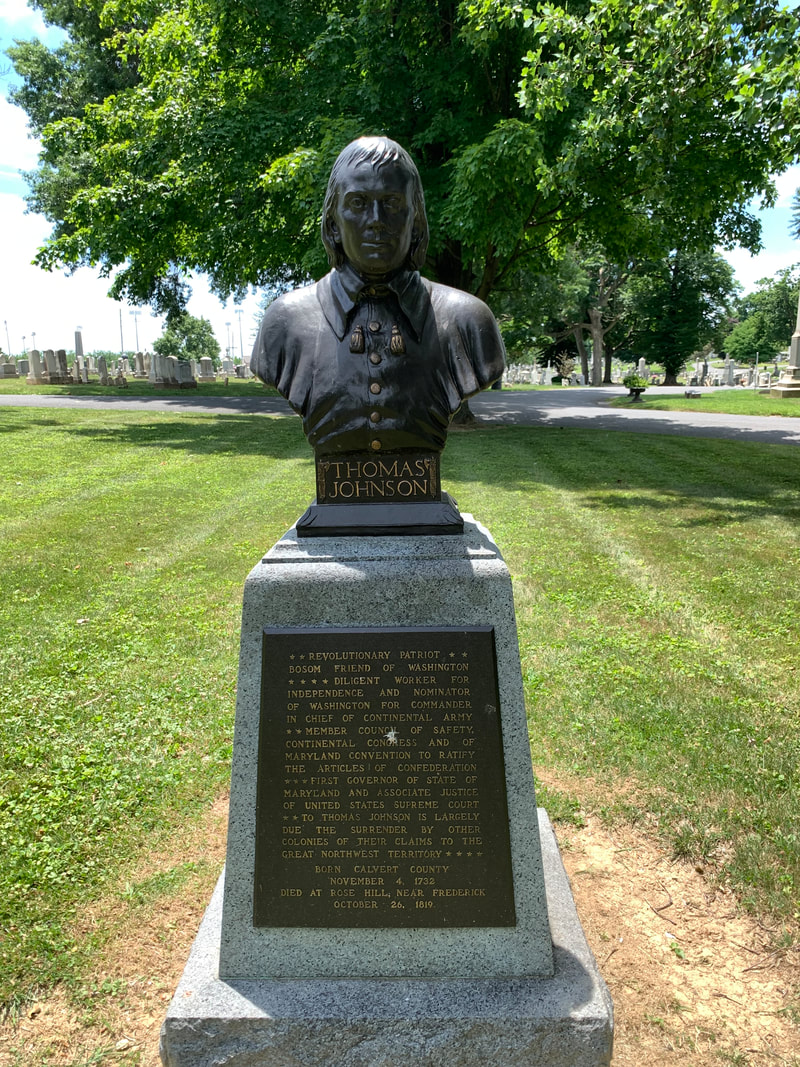



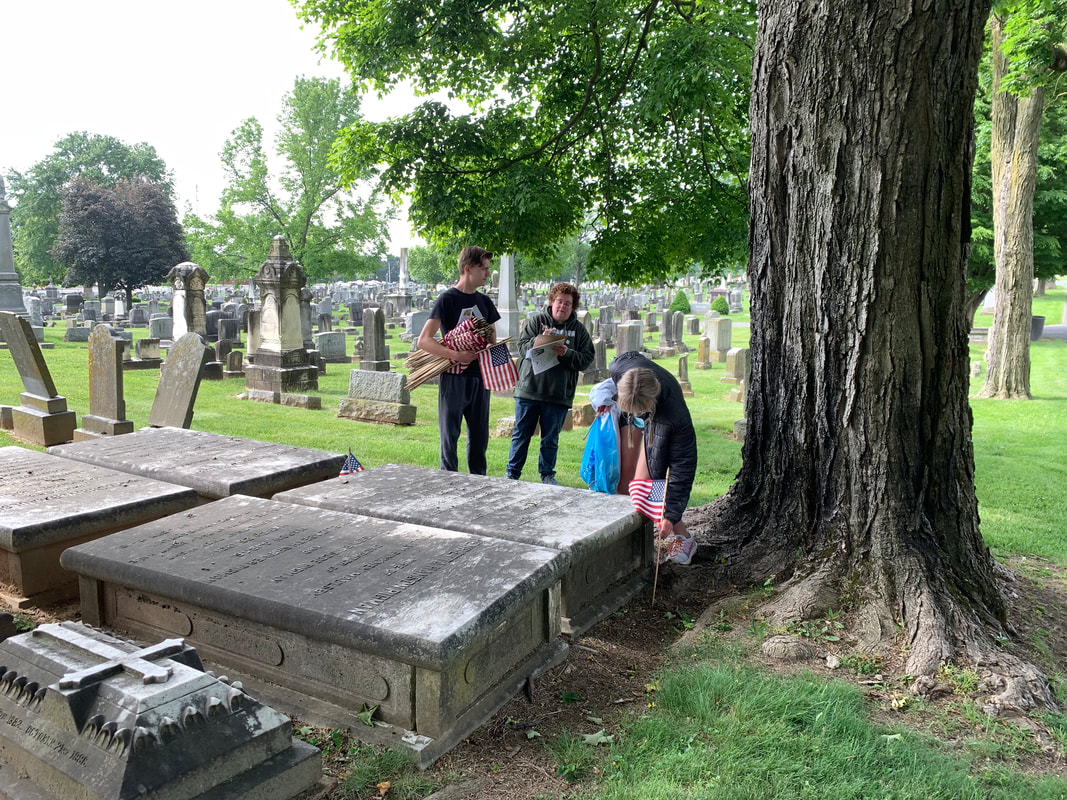
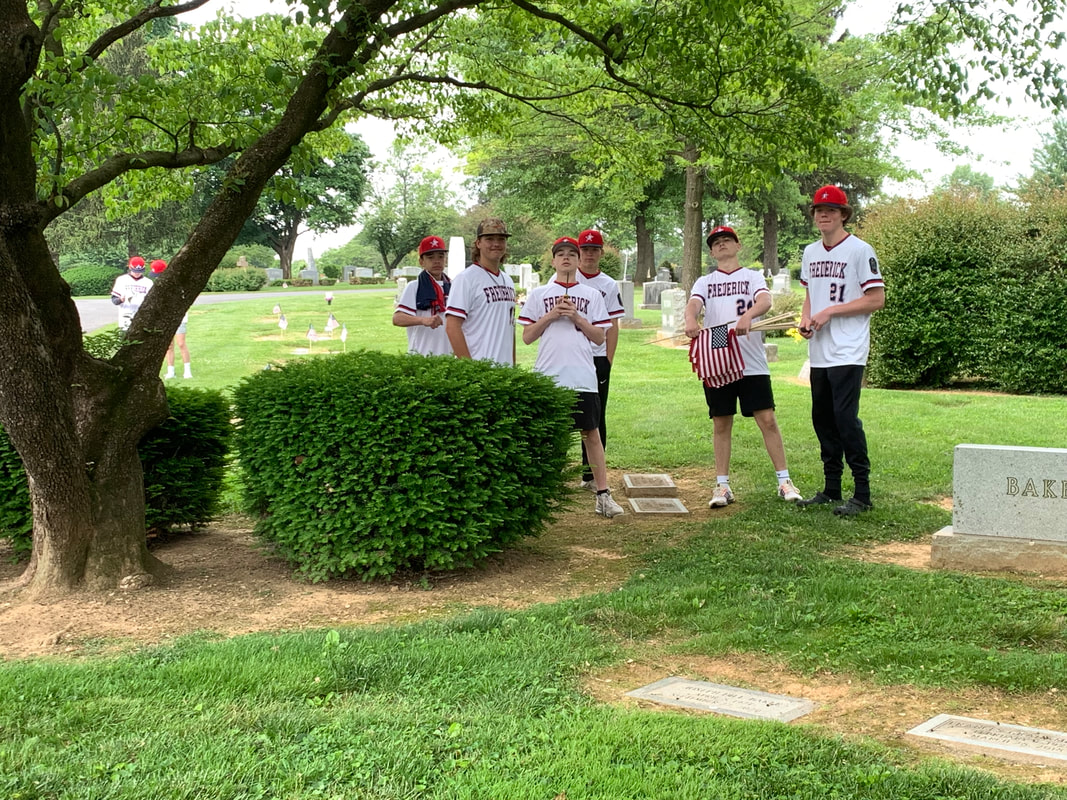








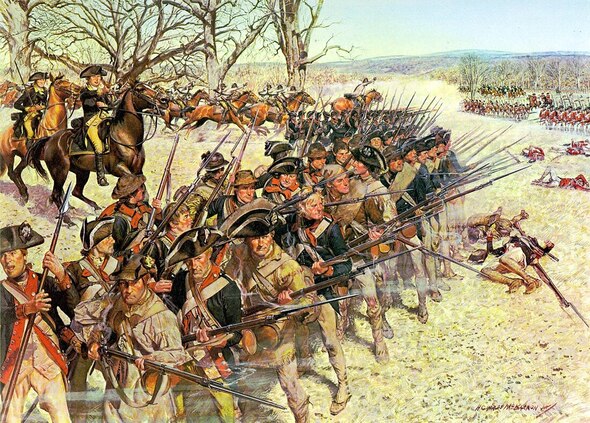



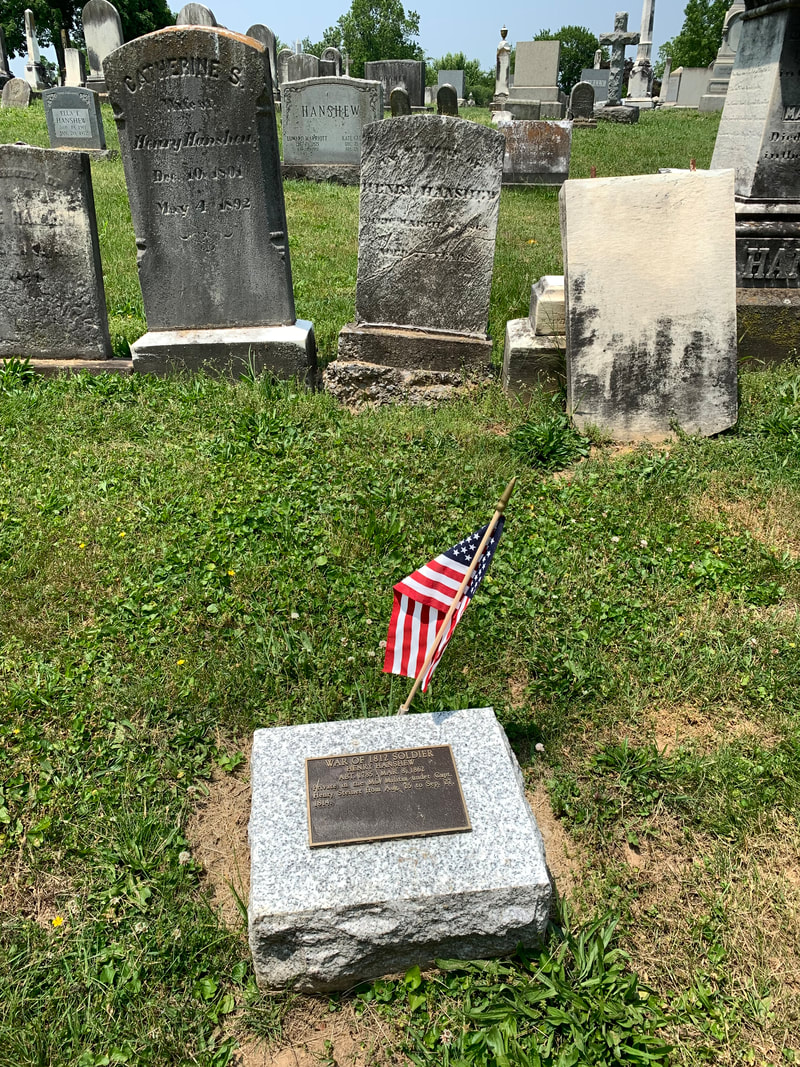





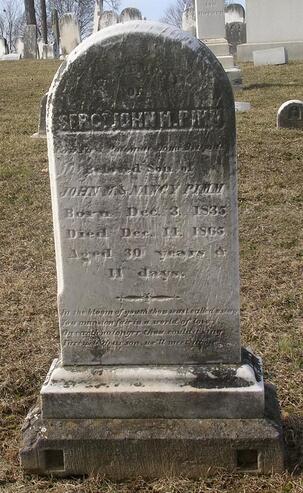




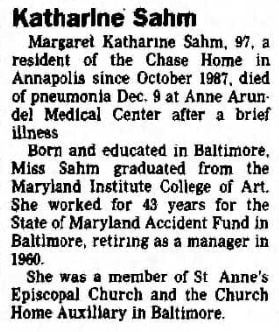














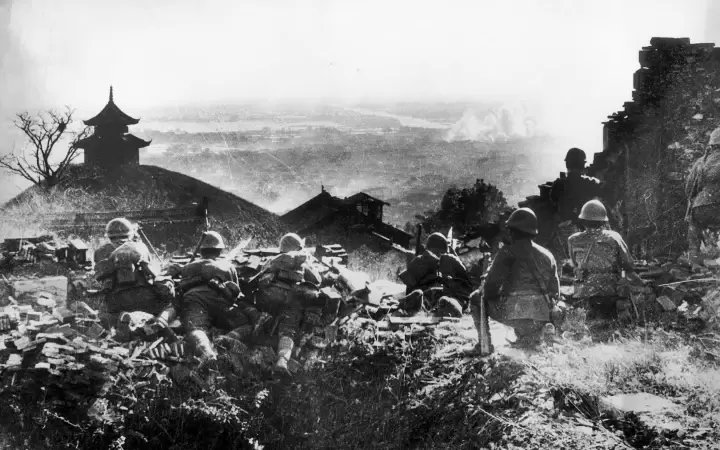





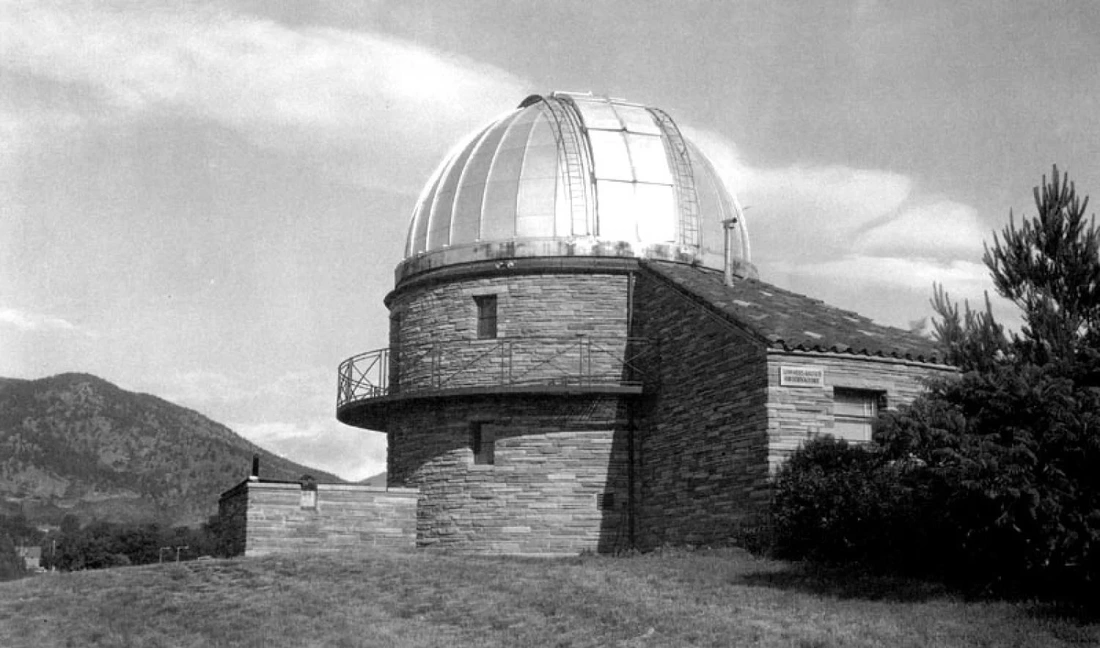












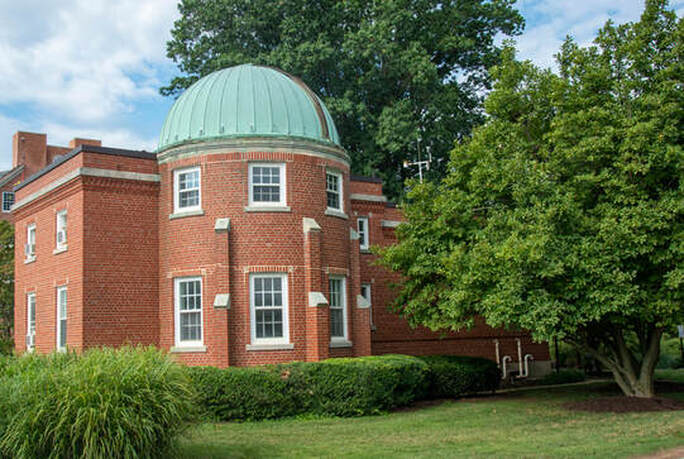

















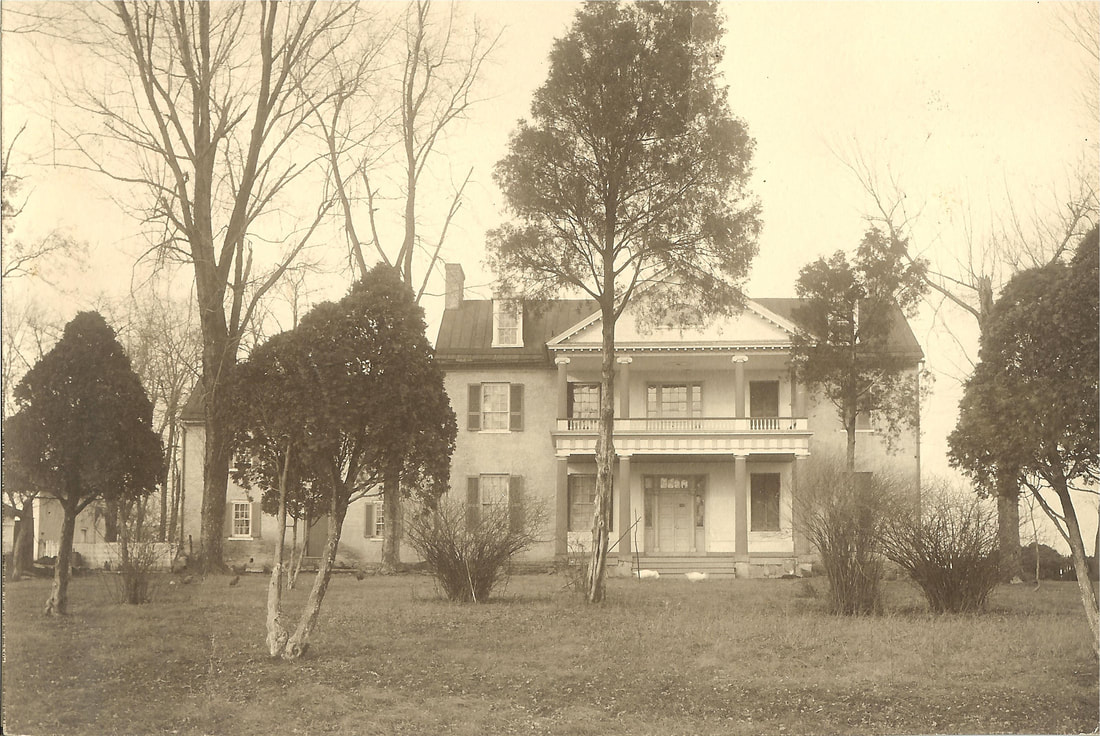



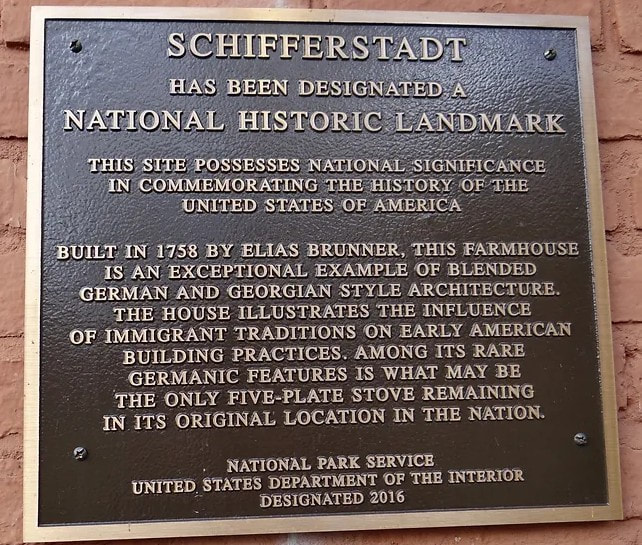










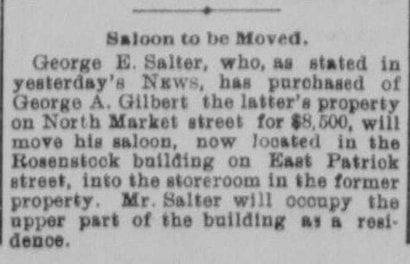













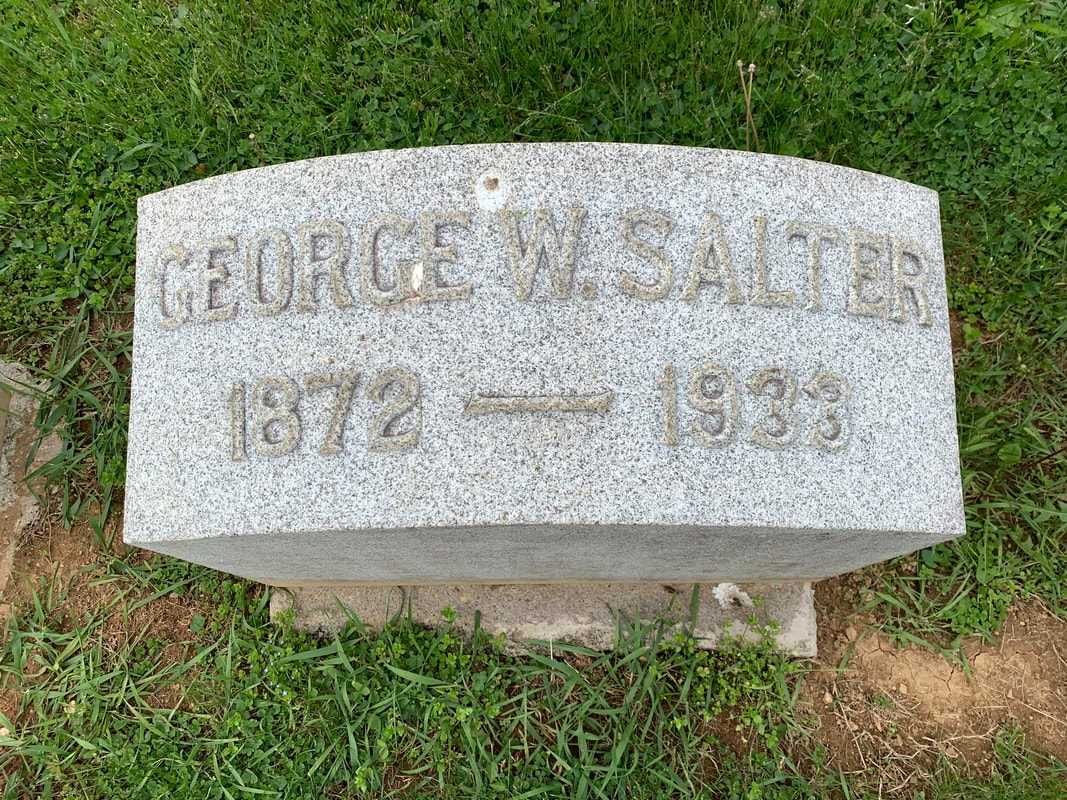
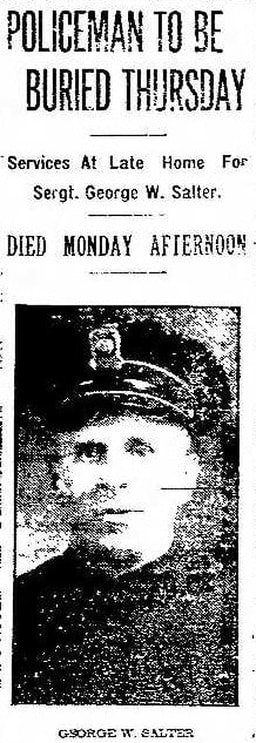





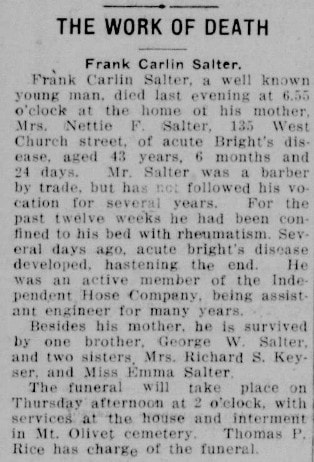







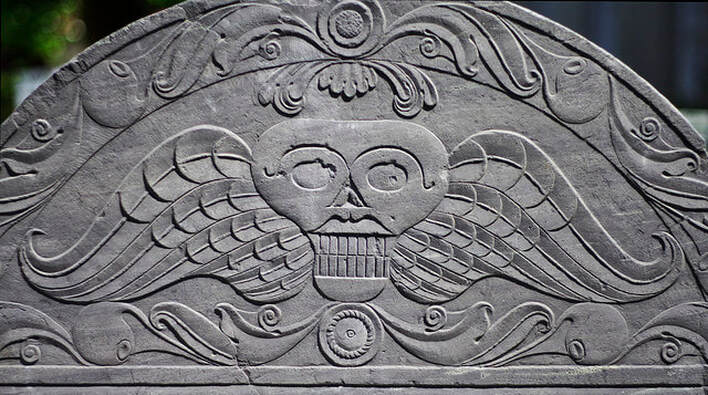


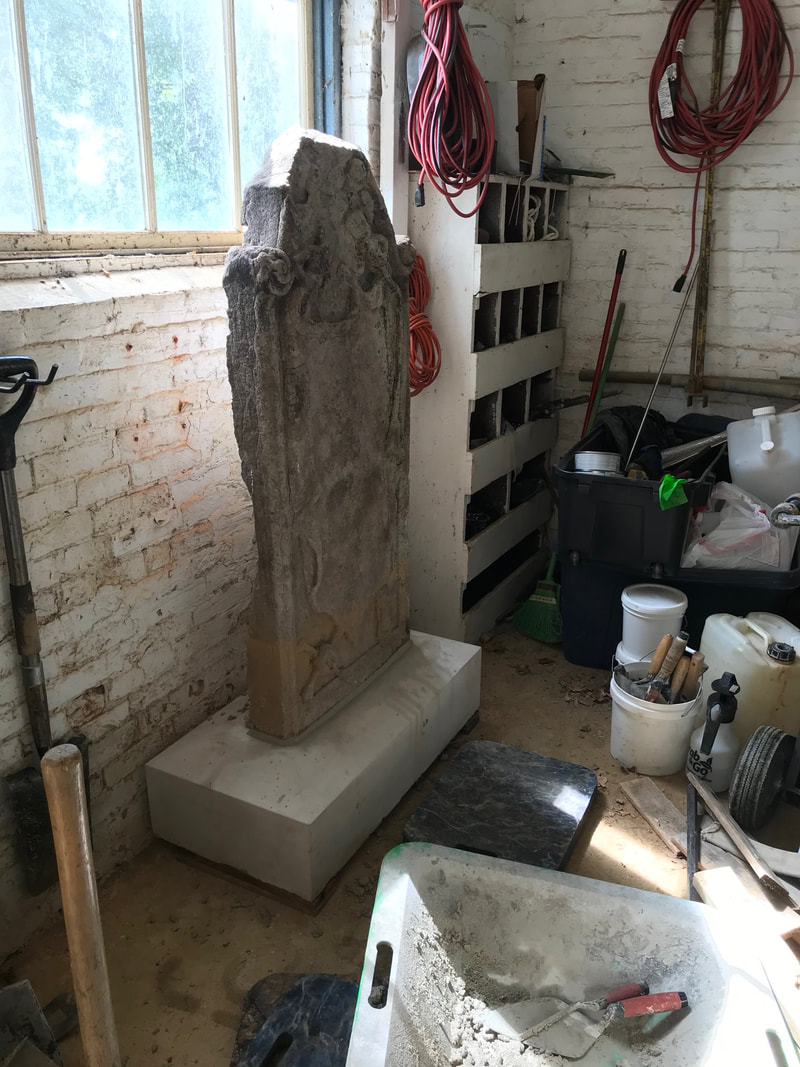

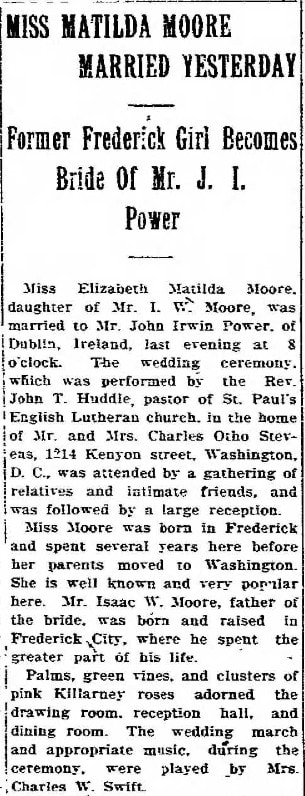











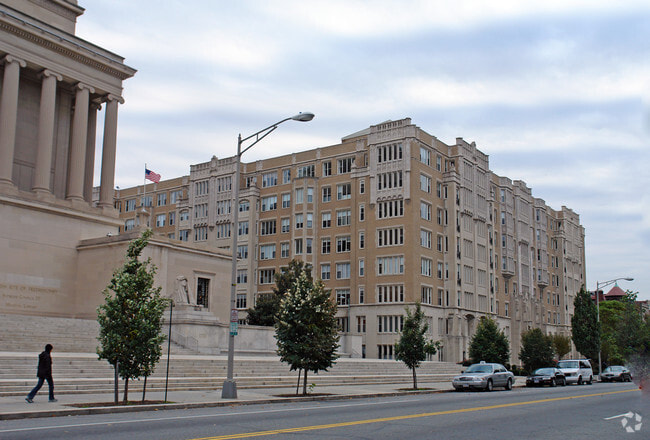



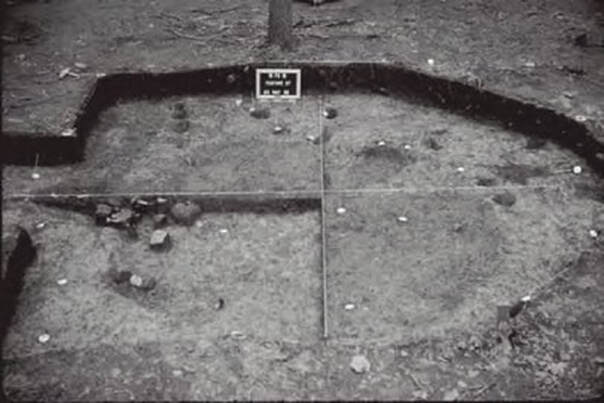

 RSS Feed
RSS Feed